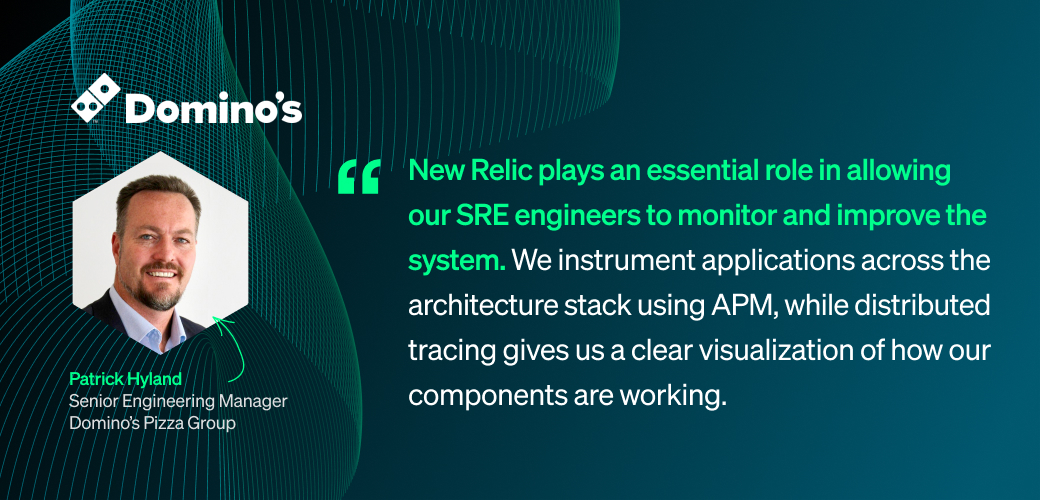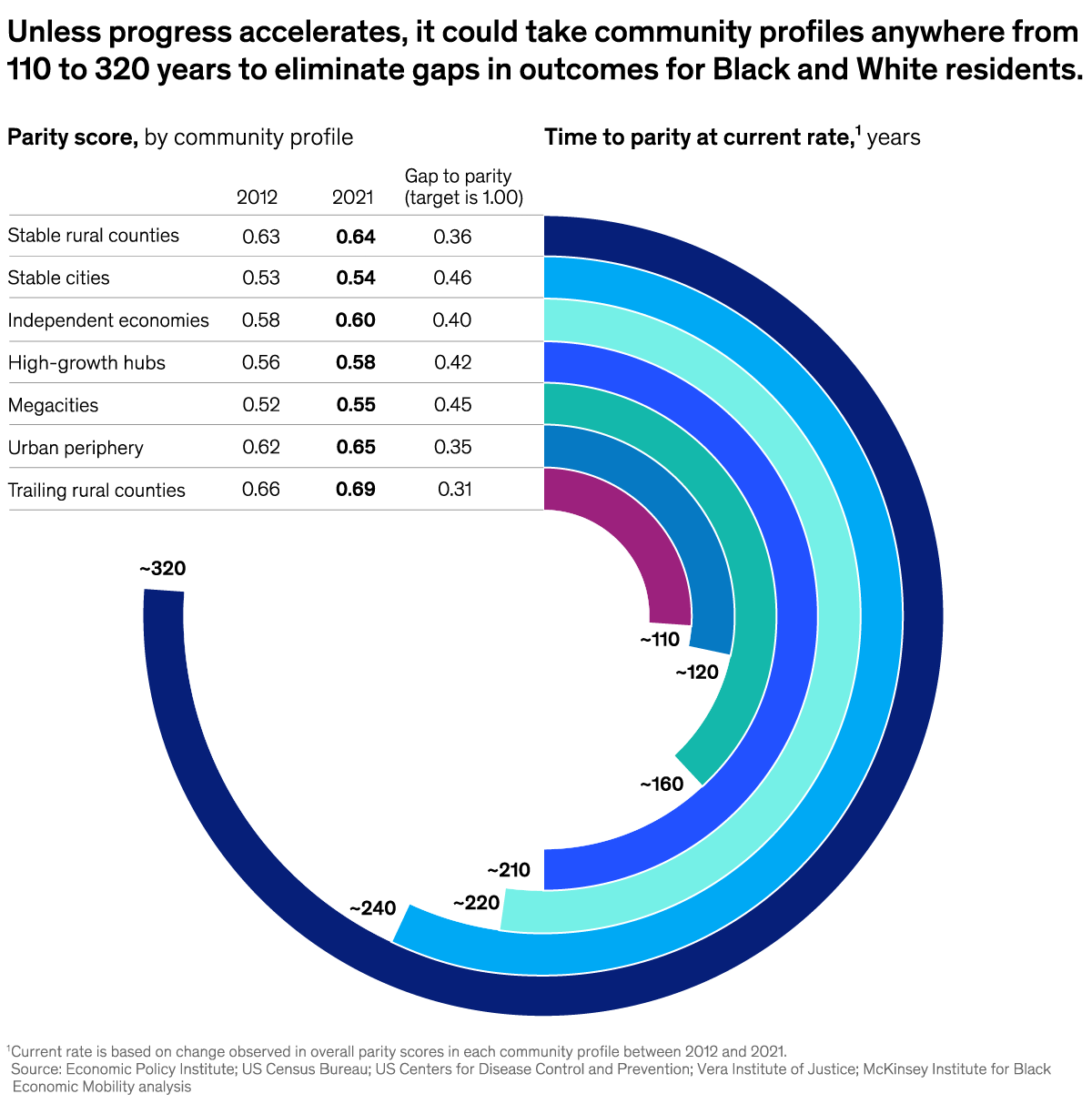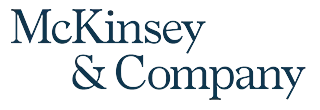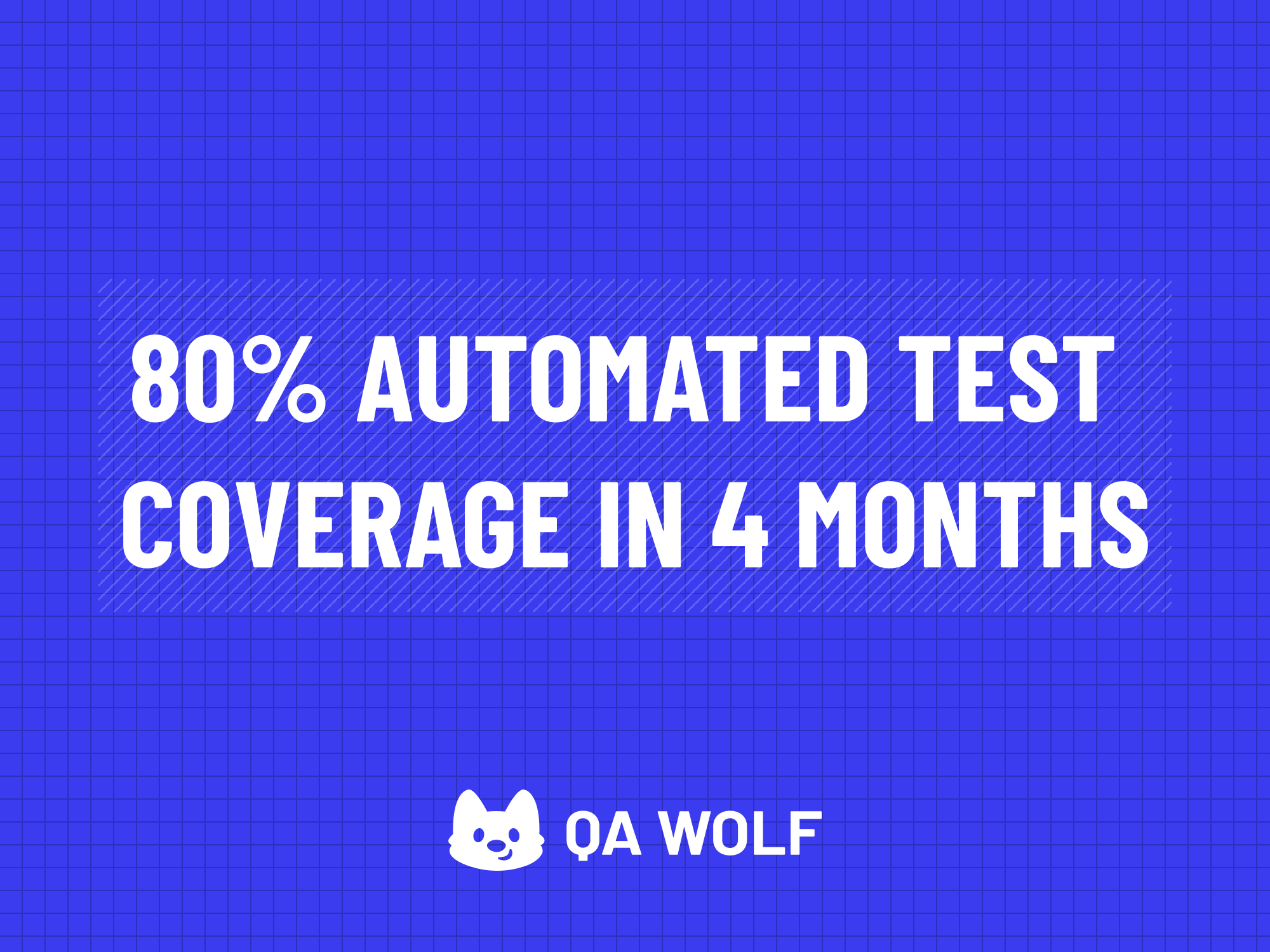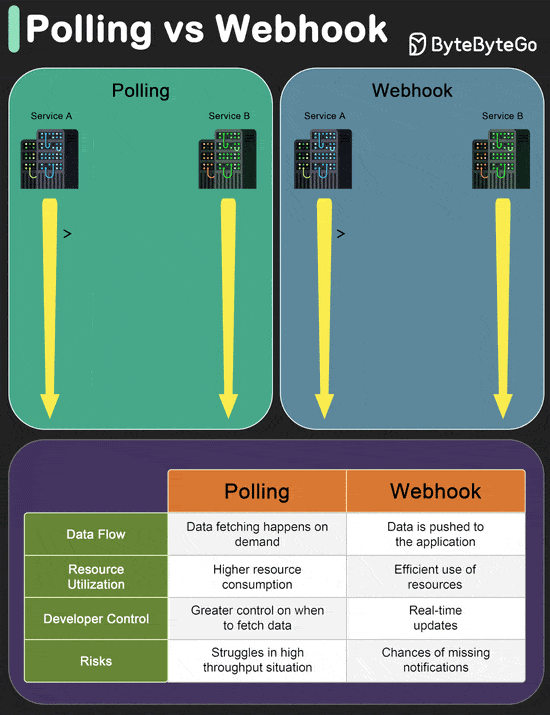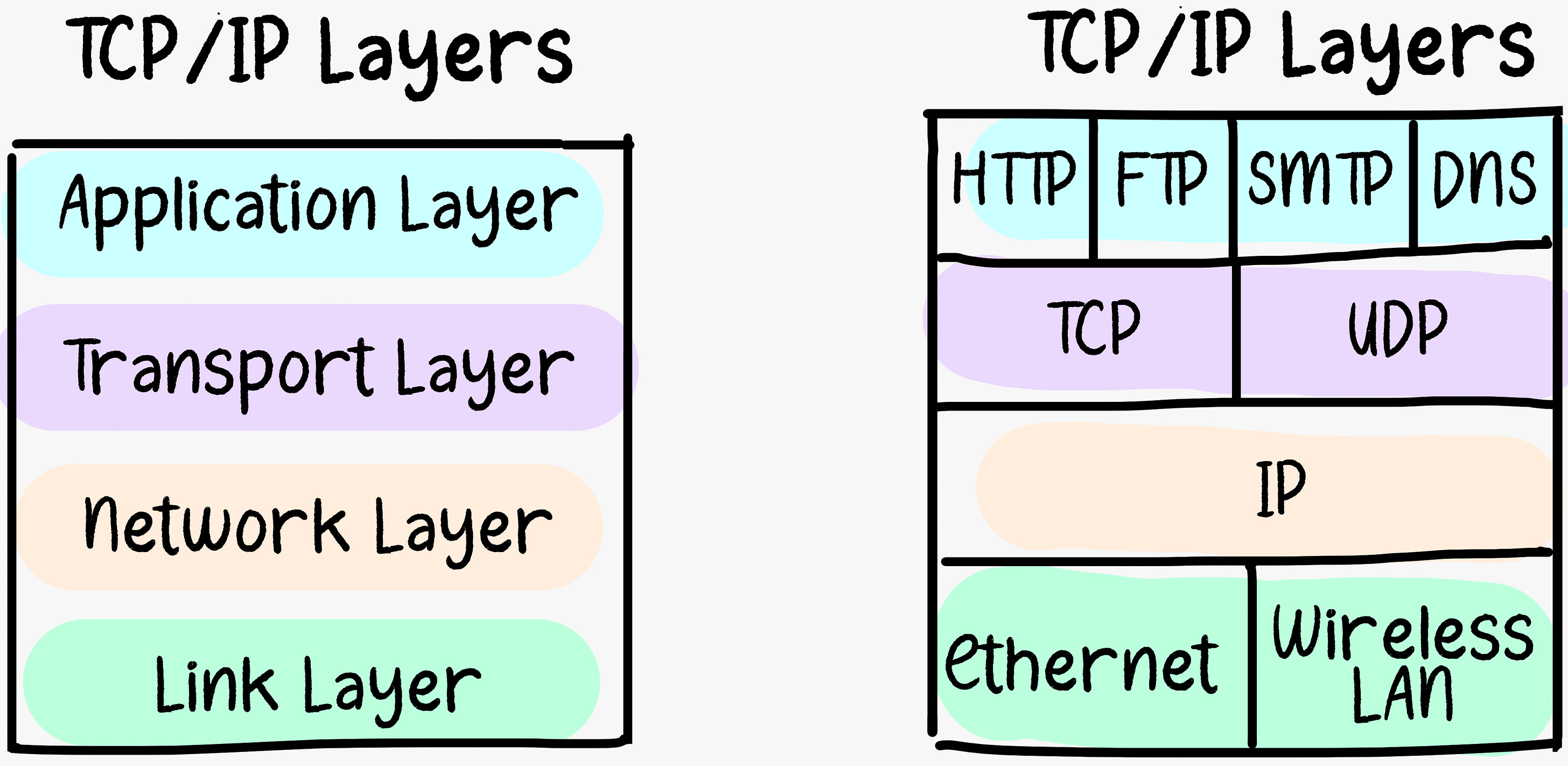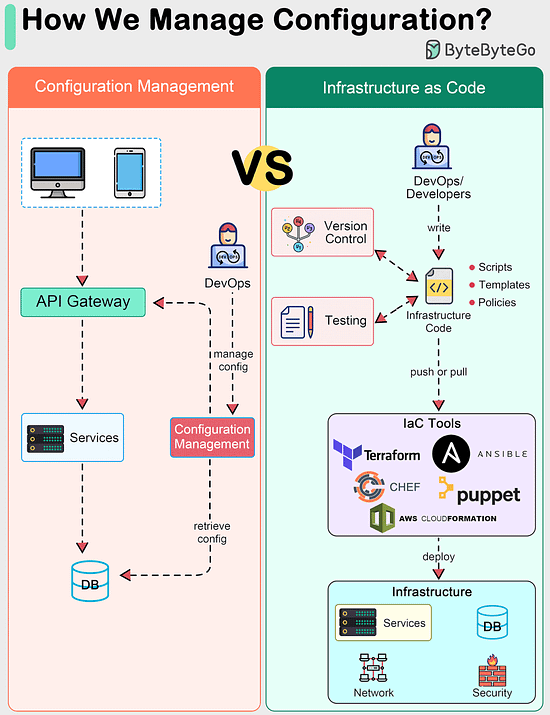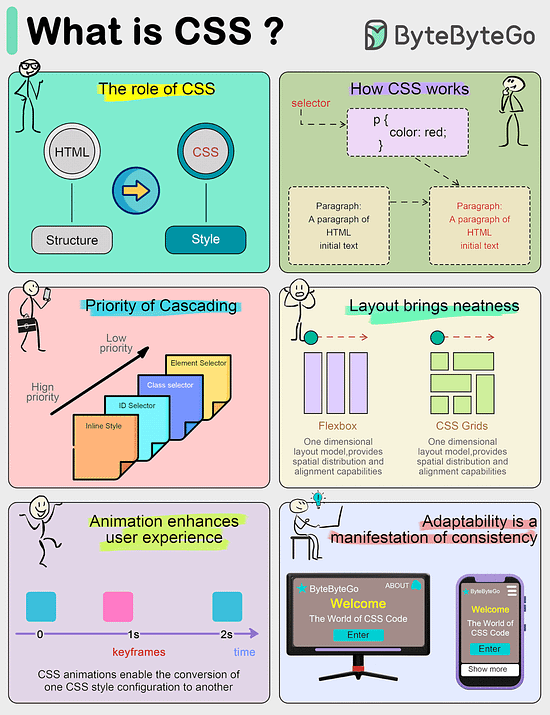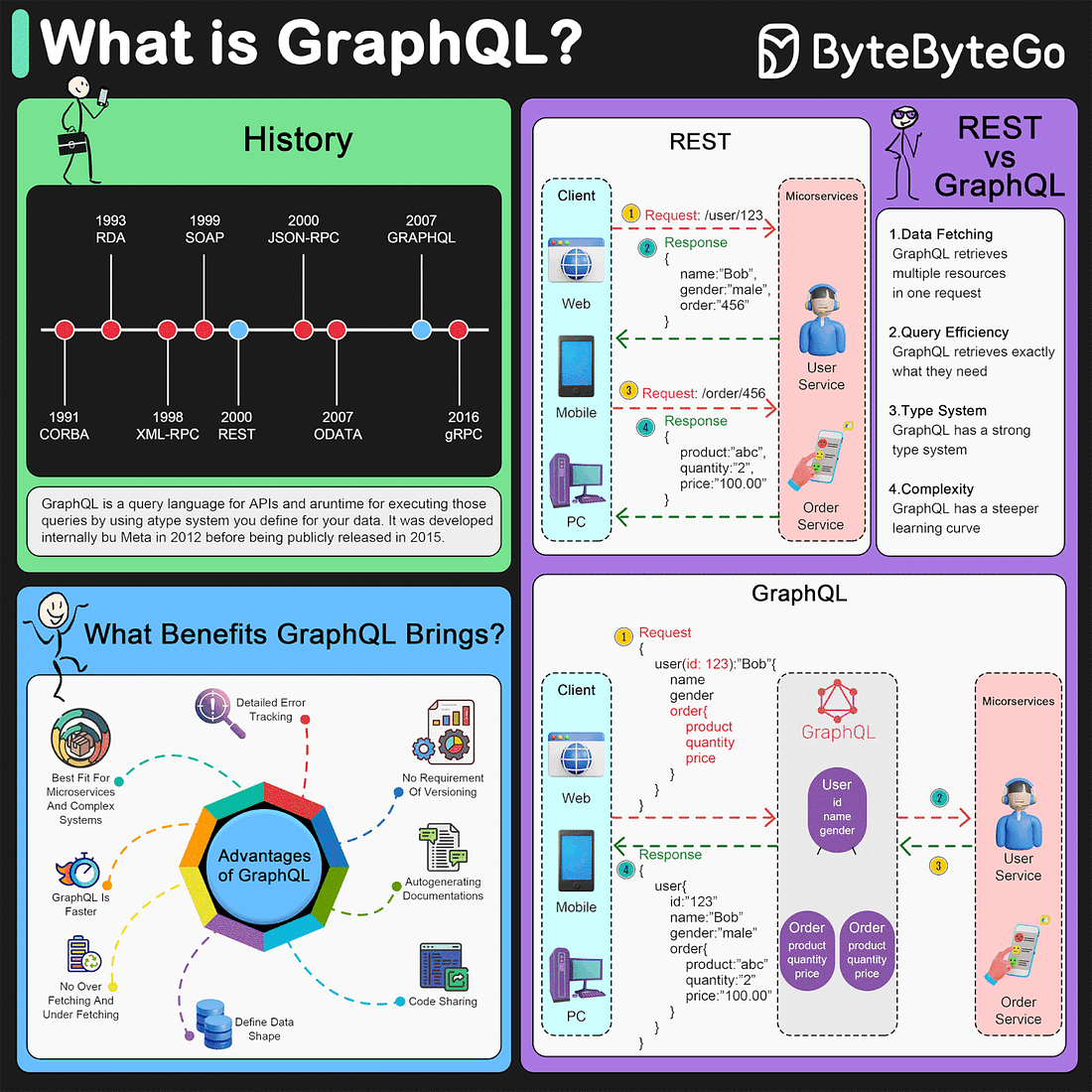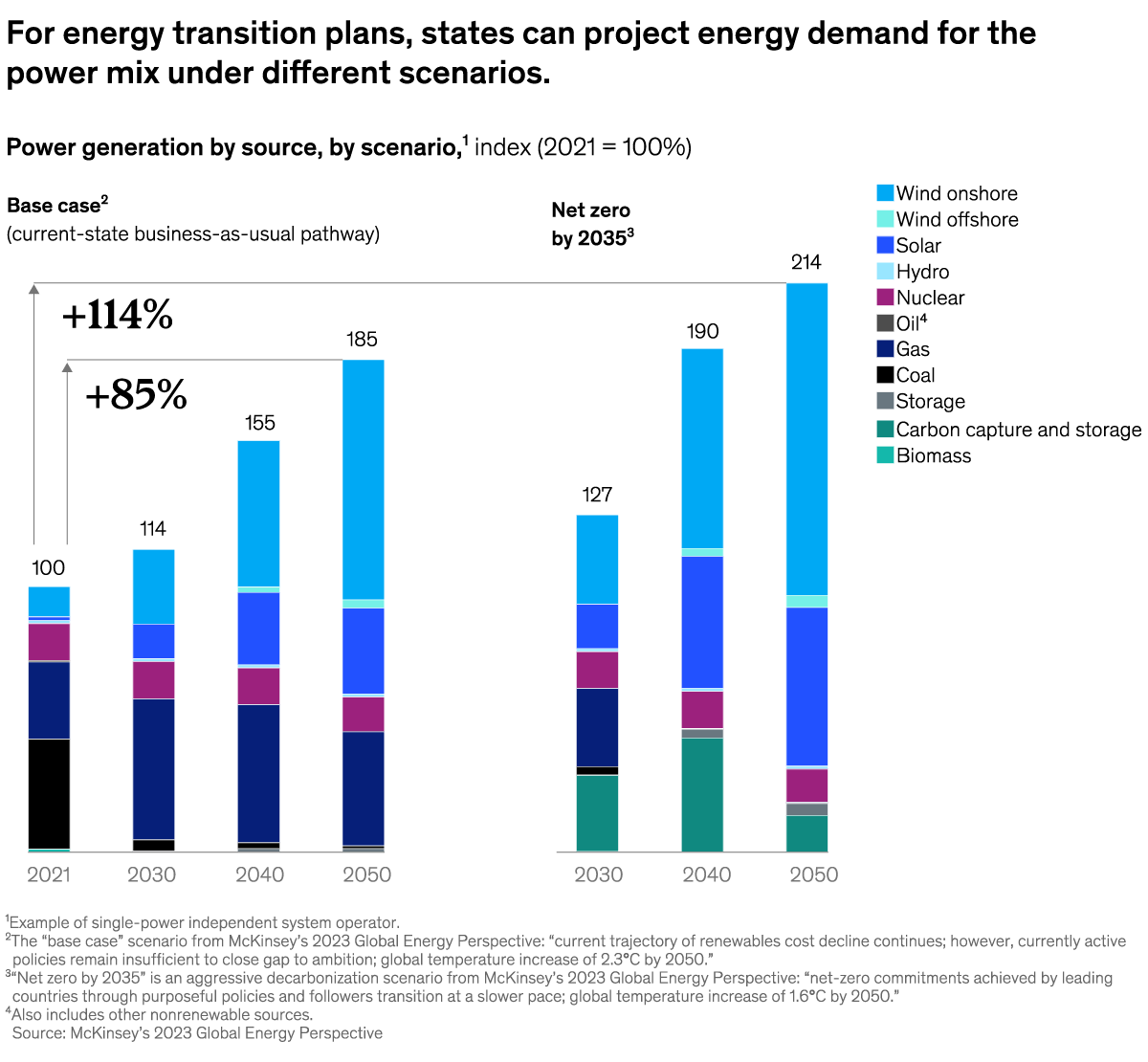Archives
- By thread 5369
-
By date
- June 2021 10
- July 2021 6
- August 2021 20
- September 2021 21
- October 2021 48
- November 2021 40
- December 2021 23
- January 2022 46
- February 2022 80
- March 2022 109
- April 2022 100
- May 2022 97
- June 2022 105
- July 2022 82
- August 2022 95
- September 2022 103
- October 2022 117
- November 2022 115
- December 2022 102
- January 2023 88
- February 2023 90
- March 2023 116
- April 2023 97
- May 2023 159
- June 2023 145
- July 2023 120
- August 2023 90
- September 2023 102
- October 2023 106
- November 2023 100
- December 2023 74
- January 2024 75
- February 2024 75
- March 2024 78
- April 2024 74
- May 2024 108
- June 2024 98
- July 2024 116
- August 2024 134
- September 2024 130
- October 2024 141
- November 2024 171
- December 2024 115
- January 2025 216
- February 2025 140
- March 2025 220
- April 2025 233
- May 2025 239
- June 2025 303
- July 2025 182
-
✨LEAP 2024: 2 hours until the event starts!
✨LEAP 2024: 2 hours until the event starts!
There's still time to sign up for an immersive experience in API observability!Hi Md Abul,
JUST 2 HOURS TO GO! Today's the day to seize the moment and join us at LEAP 2024: The API observability conference - a virtual event set to transform your skills from basic to expert in just one day.
There's still time to register for free here:
Here's what's in store:
🌟 Connect with industry leaders and experts from Miro, Dynatrace, ServiceNow, Dash0, Checkly, Tracetest, and more.
🌟 20+ speakers delivering insightful sessions to support attendees in transforming their API observability skills from basic to extraordinary.
🌟 Designed for API platform teams like yours, focusing on revolutionising your approach to platform team operations and API observability strategies.
🌟 Two tracks tailored for both decision-makers and implementers, ensuring you get the insights you need to excel in your role.
🌟 By joining us at LEAP 2024, you'll be one of the first to earn the API observability fundamentals certification.
The important bits:
Thurs
29
FebTime
9am - 4pm ET
2pm - 9pm GMTVirtual
Zoom
eventThis is THE day to elevate your API observability skills from basic to expert level!
See you at LEAP 2024!
Budha and team
Tyk, 87a Worship Street, London, City of London EC2A 2BE, United Kingdom, +44 (0)20 3409 1911
by "Budhaditya Bhattacharya" <communities@tyk.io> - 07:12 - 29 Feb 2024 -
Slice of Success: How Domino’s UK and Ireland increased SLO compliance, and customer satisfaction
New Relic
 February 2024
February 2024Domino's UK and Ireland runs on New Relic to deliver pizzas quicker Domino’s senior engineering manager discusses how Domino's runs vital observability and monitoring competencies across its SRE function with New Relic, including monitoring golden signals and tracking its most important customer journeys.
Learn more  Live archives helps you easily meet regulatory compliance requirements using a unique storage capability that stores log data for up to seven years in an active, hydrated, and enriched state, so that you can analyze historical logs faster and easier.
Live archives helps you easily meet regulatory compliance requirements using a unique storage capability that stores log data for up to seven years in an active, hydrated, and enriched state, so that you can analyze historical logs faster and easier.
Useful reads Discover how Dustin leverages New Relic for a seamless DevSecOps transition post-merger, optimizing tech stacks and enhancing security. Dive into their success story!
Discover how Dustin leverages New Relic for a seamless DevSecOps transition post-merger, optimizing tech stacks and enhancing security. Dive into their success story!
Upcoming Events Kubecon 19-22th March, Paris
Kubecon 19-22th March, Paris
Don't miss our exciting presence at KubeCon/ CloudNativeCon in Paris! Engage with us for a chance to win a Meta Quest 3 and grab some seriously cool swag. Join New Relic at booth F29. Mark your calendars for Observability Day on March 19th, where we'll dive deep into the superpower of observability.
EMEA - New Relic user meetups are back!
Join New Relic and other local users at our upcoming meetups in Dubai, Stockholm, Munich, Madrid, Dublin, London, Manchester, Berlin & Warsaw for food, drinks, swag & more! Discover what’s new in observability and learn best practices in log data - parsing and obfuscation, converting events-to-metrics, and managing SLOs & SLIs. Bring your a-game to compete in our version of Flappy Birds with prizes aplenty!
New Relic End-of-Life Updates
PHP Frameworks, Libraries, and Language Versions (March 1, 2024)
The PHP community have deprecated the following frameworks and libraries:
- CakePHP 2.x: End of lifed by CakePHP in June 2021
- CodeIgniter 2.x: End of lifed by CodeIgnitred in 2015
- Drupal 6.0: End of lifed by Drupal in 2016
- Guzzle library versions 3 and 4: End of lifed by Guzzle in 2015 and 2018 respectively
- Magento 1.x: End of lifed by Magento in December 2020
- PHPUnit library versions 3, 4, 5, 6, 7
- Symfony 3.x: End of lifed by Symfony in November 2021
- Yii 1.0: End of lifed by Yii in 2010
- Zend framework 1.x, 2.x: End of lifed by Zend in 2016 and 2018 respectively
- We are ending support for PHP versions 7.0 and 7.1, which the PHP community deprecated three years ago.
- As a result, we can no longer provide support if you use these versions.
- We recommend you update any EOL’d versions to supported versions. We strongly recommend customers update to PHP version 8.2.
- Please see here for more information.
Platform Support for Legacy UI Experiences (March 1, 2024)
- Some pages in one.newrelic.com use legacy design and code. We are officially migrating these pages to match the rest of the UI.
- No action is needed from you. The experiences still using legacy code will be automatically updated and replaced.
- Please see here for more information.
Need help? Let's get in touch.



This email is sent from an account used for sending messages only. Please do not reply to this email to contact us—we will not get your response.
This email was sent to info@learn.odoo.com Update your email preferences.
For information about our privacy practices, see our Privacy Policy.
Need to contact New Relic? You can chat or call us at +44 20 3859 9190.
Strand Bridge House, 138-142 Strand, London WC2R 1HH
© 2024 New Relic, Inc. All rights reserved. New Relic logo are trademarks of New Relic, Inc

by "New Relic" <emeamaketing@newrelic.com> - 06:06 - 29 Feb 2024 -
What would it take for Black US residents to achieve racial parity?
On Point
See the surprising data
by "Only McKinsey" <publishing@email.mckinsey.com> - 01:28 - 29 Feb 2024 -
👀 This month at Remote: Explore if async work is the future. Check out HRIS updates and don't miss our live events and webinars.
👀 This month at Remote: Explore if async work is the future. Check out HRIS updates and don't miss our live events and webinars.
Your monthly global update is here from Remote. Dive in to see the latest.
 February
2024
February
2024

Featured news
Celebrating and exploring asynchronous work
This month, we're celebrating asynchronous work at Remote. Our entire team, which now consists of over 1,400 members, operates without offices or a centralized timezone. Over the last 5 years we've learned quite a bit about effective asynchronous work on a large scale. In fact, our CEO Job has just launched a free masterclass on the subject!
"Async Power Hour" Webinar
We're also hosting our first ever "Async Power Hour" webinar. This event will provide insights into how Remote manages a global team within an asynchronous work culture. We're not just throwing around buzzwords; we're sharing real insights and practical advice on building an asynchronous culture and hiring the right team. Our CEO and managers will discuss the day-to-day operations of an asynchronous team and explain why it’s a game changer for success.
Read: Why should you be working asynchronously?
Read this blog post from our President and Co-Founder Marcelo Lebre as he explores the transformative power of asynchronous work, highlighting its efficiency for global teams and boosting productivity without the constraints of synchronized schedules.

New feature announcement
What’s new with Remote global HR?
Since launching Remote’s HRIS last September, we’ve made some BIG improvements — and we’re just getting started!

Events
We have a bunch of in-person events that you can catch the Remote team at around the world. If you have some burning questions that you'd love to ask in real life, or wanna just come say hi, our team would love to see you!
Remote is coming to #SXSW 2024!
📍 Austin, USA
Find us In the Creative Industries Expo at booth number 413.📍Las Vegas, USA
Transform is coming! And Remote is sponsoring! So if you’re in Las Vegas don’t miss the chance to stop by booth 117.National HR Summit: 20-21 March, 2024
📍Sydney, Australia
Join us at the workshop Stage workshop on addressing Australia's labor and talent shortages led by Eli Chuah, Remote's Solutions Consultant. She will delve into innovative strategies and practical solutions.
Featured webinar
Are you a UK-based startup hiring talent outside the country?
March 5th, 9am - 10am TUC
Join us for an insightful webinar: Learn the “how” and “why” of building your international team from Remote’s Chief People Officer Barbara Matthews and SeedLegals Founder Anthony Rose.
Feeling buried in irrelevant job applications?
95% of surveyed employers do too! Remote Talent's ad-free platform connects you with the right talent, cutting through the noise of traditional job boards.
.png?height=64&upscale=true&name=Youtube%20(5).png)

.png?height=64&upscale=true&name=twitter%20(4).png)
.png?height=64&upscale=true&name=instagram%20(1).png)
You received this email because you are subscribed to News & Offers from Remote Europe Holding B.V
Update your email preferences to choose the types of emails you receive.
Unsubscribe from all future emailsRemote Europe Holding B.V
Copyright © 2024 Remote Europe Holding B.V All rights reserved.
Kraijenhoffstraat 137A 1018RG Amsterdam The Netherlands
by "Remote" <hello@remote-comms.com> - 11:47 - 28 Feb 2024 -
🔭 Why is everyone talking about observability?
🔭 Why is everyone talking about observability?
Unravel the mysteries of observability and find out why it's the hottest topic in tech!Got your ears perked for the latest tech talk? Well, you're in for a treat because we're diving headfirst into the world of observability – and trust us, it's more than just a buzzword.
In short, well-implemented API observability can deliver:
- Faster issue responses: Swiftly address API issues with monitoring
- Quick value delivery: Expedite value delivery through troubleshooting
- Enhanced quality: Improve user experiences with higher-quality APIs
- Deeper understanding: Gain insights to optimise API ecosystems.
Embracing observability isn't just about keeping pace - it's about driving tangible business value by supercharging operations, boosting performance, and staying ahead of the competition.
And hey, speaking of staying ahead, have you heard about LEAP 2024? It's our API observability conference happening TOMORROW (Feb 29). Keep scrolling to sign up, and explore all the other (mostly) observability resources we have on offer.
P.S. Want to hear more from Tyk? Subscribe to our newsletter here.

Tyk in the limelight
LEAP 2024: The API observability conference
Are you ready to transform your API observability skills? This one-day event promises to revolutionise the way you approach platform team operations and observability strategies. Oh, and we should add that by attending LEAP, you'll unlock exclusive access to the API observability fundamentals certification.
Sign up here.We're going to KubeCon!
Get in the car (or train, or plane), we're going to Kubecon! Join us at booth L14 see how our solutions can elevate your platform maturity. And, make sure you join our session: Exploring OAuth2 Token Exchange for microservice API security - Wednesday, 20th March - 11:15 - 11:50. À bientôt!

The resource hub
New blogs on the block
Everyone's talking about observability
Observability is a hot topic right now – and it’s about to get even hotter. Future Market Insights predicts the observability platform market will more than double in size by 2032, growing from a value of US$2,173.7 million in 2022 to US$5,553.2 million a decade later. So, why is everyone so excited?
The business value of observability
Observability, especially distributed tracing, transforms API monitoring and troubleshooting. Beyond that, it offers valuable insights for maintaining control, security, and compliance in an organisation's API ecosystem. Here, we delve into the business benefits of observability for API teams. Read more.
How to improve API observability
Getting API observability right underpins API-led growth. It can identify opportunities for revenue, support better decision-making and reduce operational overheads by creating more efficient working practices, particularly when it comes to open standards. Find out more.

Tyk events
Want to be the first to hear about our events? Sign up here to stay in the loop.
We also have a PLETHORA of webinars on all sorts of API-related topics you can crack into and watch on-demand here.
Go on, you know you want to check them out!
Why did the developer bring a telescope to the API party?
Because they wanted to ensure top-notch API observability and keep a close eye on those endpoints!Disclaimer: The author assumes no responsibility for the quality of this joke. This specific content is provided with no guarantees of laughter, entertainment, or any ounce of usefulness.
Tyk, 87a Worship Street, London, City of London EC2A 2BE, United Kingdom, +44 (0)20 3409 1911
by "Budhaditya Bhattacharya" <communities@tyk.io> - 01:04 - 28 Feb 2024 -
How are higher costs affecting US consumers?
On Point
5 strategies for consumer brands Brought to you by Liz Hilton Segel, chief client officer and managing partner, global industry practices, & Homayoun Hatami, managing partner, global client capabilities
•
Choosier consumers. US consumers are becoming choosier despite a relatively strong economy and low unemployment, McKinsey senior partner Warren Teichner and coauthors reveal. Although Americans are shopping as frequently—if not more often—as they were a year ago, they are buying fewer items on each trip. Between 2022 and 2023, units per trip declined by 3 to 5% across the grocery, health and beauty, and household categories.
— Edited by Belinda Yu, editor, Atlanta
This email contains information about McKinsey's research, insights, services, or events. By opening our emails or clicking on links, you agree to our use of cookies and web tracking technology. For more information on how we use and protect your information, please review our privacy policy.
You received this newsletter because you subscribed to the Only McKinsey newsletter, formerly called On Point.
Copyright © 2024 | McKinsey & Company, 3 World Trade Center, 175 Greenwich Street, New York, NY 10007
by "Only McKinsey" <publishing@email.mckinsey.com> - 01:53 - 28 Feb 2024 -
Temperature Monitoring Software - Keep Temperature Sensitive Goods at the Right Temperature.
Temperature Monitoring Software - Keep Temperature Sensitive Goods at the Right Temperature.
Ensure that the products are always stored and transported at the right temperature.
The Unmatched Advantages of Using
Temperature Monitoring
Uffizio Technologies Pvt. Ltd., 4th Floor, Metropolis, Opp. S.T Workshop, Valsad, Gujarat, 396001, India
by "Sunny Thakur" <sunny.thakur@uffizio.com> - 07:00 - 27 Feb 2024 -
Banks can face risks and opportunities head-on
On Point
How banks can reinvent themselves Brought to you by Liz Hilton Segel, chief client officer and managing partner, global industry practices, & Homayoun Hatami, managing partner, global client capabilities
•
App happy. Despite challenges, the past 18 months have been the best period for global banking since at least 2007. But this is no time for complacency, McKinsey senior partner Alex Edlich and partner Reinhard Höll share on a recent episode of The McKinsey Podcast. To build on this momentum, they say, banks can meet customers where they are, which is often on third-party apps. Up to 30% of distribution in retail banking could end up taking place via third parties, such as online comparison platforms and embedded finance, McKinsey estimates.
•
Competing on technology. When it comes to making changes in technology, banks need to make sure the entire organization is on board, Höll advises. After implementing generative AI, the top 25% of banks experienced a large increase in coders’ productivity, while the bottom 25% of banks “saw an initial decrease because they didn’t take the people along,” Höll says. Learn three things tech-savvy banking leaders are doing to embrace technology, and for more, read the full report, Global Banking Annual Review 2023: The Great Banking Transition.
— Edited by Jana Zabkova, senior editor, New York
This email contains information about McKinsey's research, insights, services, or events. By opening our emails or clicking on links, you agree to our use of cookies and web tracking technology. For more information on how we use and protect your information, please review our privacy policy.
You received this newsletter because you subscribed to the Only McKinsey newsletter, formerly called On Point.
Copyright © 2024 | McKinsey & Company, 3 World Trade Center, 175 Greenwich Street, New York, NY 10007
by "Only McKinsey" <publishing@email.mckinsey.com> - 01:28 - 27 Feb 2024 -
48 hours to go! Enter the Remote Excellence Awards 2024 today 🏆
48 hours to go! Enter the Remote Excellence Awards 2024 today 🏆
You’ve got to be in it, to win it!We’ve been going through a flurry of entries for the Remote Excellence Awards 2024… it’s not too late for yours to be one of them!
Whether you’re pioneering in DE&I, mastering global compensation, or crafting cutting-edge talent strategies, there’s a category tailored for your expertise.
Did we mention the Awards are free to enter? Don’t be shy; this is your moment to shine ⭐ Just make sure you hit ‘send’ on your entry before the deadline this Friday March 1, 2024 at 11:59PM UTC.
We’re looking forward to your entry!
Team Remote.
.png?height=64&upscale=true&name=Youtube%20(5).png)

.png?height=64&upscale=true&name=twitter%20(4).png)
.png?height=64&upscale=true&name=instagram%20(1).png)
You received this email because you are subscribed to News & Offers from Remote Europe Holding B.V
Update your email preferences to choose the types of emails you receive.
Unsubscribe from all future emailsRemote Europe Holding B.V
Copyright © 2024 Remote Europe Holding B.V All rights reserved.
Kraijenhoffstraat 137A 1018RG Amsterdam The Netherlands
by "Remote" <hello@remote-comms.com> - 12:31 - 27 Feb 2024 -
📆 Unlock the power of async work: Join our webinar.
📆 Unlock the power of async work: Join our webinar.
Learn about asynchronous work in action and its impact on global teams.Hi MD,
🎉 We're thrilled to invite you to our webinar:
ASYNC Power Hour: Asynchronous Work in Action and Its Impact on Global Teams.
Watch on-demand, starting March 6th, 2024. This pre-recorded webinar is all about embracing async. Why this format? Because learning should fit your schedule, not the other way around.
Agenda Highlights:
- Buzzword or Future of Work? 🤔 Remote CEO, Job van der Voort unpacks the reality of async work in a global organisation.
- Confessions from the People Team: 💬 Insights into cultivating an ASYNC culture from our global team leaders.
- Hiring for an ASYNC Workplace: 👥 Learn strategies for assembling a remote-ready team, featuring advice from our Director of Talent Acquisition, Anastasia Pshegodskaya.
- Managing an ASYNC Team: 💼 Discover lessons from our leadership, including firsthand experiences from Amanda Day, Senior Director of People Enablement.
Gain actionable insights and strategies to enhance your team's productivity 📈 and flexibility. Be sure to Register Now and set your team up for success. 🏆
The HR platform for global businesses
Remote makes running global teams simple.
Hire, manage, and pay anyone, anywhere.



You received this email because you are subscribed to News & Offers from Remote Europe Holding B.V
Update your email preferences to choose the types of emails you receive.
Unsubscribe from all future emailsRemote Europe Holding B.V
Copyright © 2024 All rights reserved.
Kraijenhoffstraat 137A 1018RG Amsterdam The Netherlands
by "Remote" <hello@remote-comms.com> - 10:01 - 26 Feb 2024 -
Only the best: A leader’s guide to delivering exceptional customer experiences
At your service Brought to you by Liz Hilton Segel, chief client officer and managing partner, global industry practices, & Homayoun Hatami, managing partner, global client capabilities
Customer service blunders may be entertaining when they are lampooned in the media. In real life, however, shoppers who have been put on hold for hours or had packages go astray are unlikely to be amused. The COVID-19 outbreak brought about major changes in consumer behavior, pushing retailers to adapt quickly to meet customer demands and expectations—and today, those expectations continue to rise ever higher. Delivering a memorable customer experience (CX)—which we define as everything an organization does to provide superior experiences, value, and growth for customers—could be a game-changing competitive differentiator for companies if managed properly.
AI-based customer service transformations show great promise, but rising customer expectations, transaction complexity, and shortage of skilled labor may pose challenges. “Leaders in AI-enabled customer engagement have committed to an ongoing journey of investment, learning, and improvement, through five levels of maturity,” note McKinsey senior partners Greg Phalin, Renny Thomas, and colleagues. For example, organizations at Level 1 may still deploy paper-driven and high-touch interactions, but organizations at Level 5 may handle more than 95 percent of their customer service via AI and digital channels. A financial institution implemented an AI-powered transformation that increased self-service channel use, achieved a 40 to 50 percent reduction in service interactions, and decreased cost-to-serve by more than 20 percent.
That’s the number of core steps in the new playbook that retail companies—whether they sell to consumers or businesses—may need to follow to create a deep connection with customers, according to McKinsey partner Marco Catena and colleagues. For example, developing new services is an important second step in the process. “The right portfolio of services will be based on a detailed understanding of the loyal customer base—in particular, how relevant the services are to them and whether there are unmet needs that you as a retailer can fulfill,” says Catena. “[A new service] should not be random but clearly and coherently match the brand values, purpose, and capabilities of the company.”
That’s McKinsey senior partner Ewan Duncan and coauthors in an article on how combining traditional CX practices—such as capturing and analyzing customer data and sentiment—with user-centered design processes can result in customer journeys that deliver powerful impact. For example, design approaches can enhance quantitative data with insights from ethnography, psychology, and human factors to shed light on the motivations that underlie consumer behavior. Embedding design thinking into CX may need a shift in mindset, however, with customer-centric thinking becoming “a core capability for everyone across the organization, from the C-suite to frontline employees,” suggest the authors.
“Successful strategies are founded on the notion that consumers are in charge,” says McKinsey senior partner Becca Coggins in a podcast on the changes taking place in the retail industry. “The retailers that embrace consumer-driven commerce are the winners.” In particular, “zero consumers” exert considerable influence: these are people who shop across a variety of channels, have zero loyalty to specific brands, zero patience in waiting for delivery, and care about net zero, or sustainability. Winning over these consumers may involve capturing “share of life”—offering shoppers unique or unexpected ways to incorporate a specific retailer into their lives—as opposed to just share of wallet. “It’s important for retailers to go beyond the core of what we would call omnichannel retail—or even go beyond services,” observes McKinsey partner Steven Begley. Companies that go beyond their core omnichannel retail offerings stand to generate considerable revenue, he adds: “Our work suggests that, for most retailers, less than 10 percent of their revenue sits in those businesses today. But within five years, those businesses could be as much as 40 percent of the profits.”
While there are always going to be some dissatisfied customers, unhappy consumers today are becoming more aggressive, at least according to the 2023 National Customer Rage Survey. And more of them are seeking “revenge” by pestering or publicly shaming companies that they believe haven’t responded to their complaints. There may be no easy solutions to the problem, but hypersonalization—also known as the “care of one”—could be a critical goal for companies to strive for in 2025. Hyperpersonalization involves proactively identifying customers’ needs, integrating technologies and contact across all channels, and implementing agent tools such as real-time coaching to tailor the care experience to each customer’s needs and journey.
Lead by caring for customers.
– Edited by Rama Ramaswami, senior editor, New York
Share these insights
Did you enjoy this newsletter? Forward it to colleagues and friends so they can subscribe too. Was this issue forwarded to you? Sign up for it and sample our 40+ other free email subscriptions here.
This email contains information about McKinsey’s research, insights, services, or events. By opening our emails or clicking on links, you agree to our use of cookies and web tracking technology. For more information on how we use and protect your information, please review our privacy policy.
You received this email because you subscribed to the Leading Off newsletter.
Copyright © 2024 | McKinsey & Company, 3 World Trade Center, 175 Greenwich Street, New York, NY 10007
by "McKinsey Leading Off" <publishing@email.mckinsey.com> - 04:49 - 26 Feb 2024 -
Will generative AI lift up Black communities?
On Point
Effects on minority workers Brought to you by Liz Hilton Segel, chief client officer and managing partner, global industry practices, & Homayoun Hatami, managing partner, global client capabilities
•
A wider wealth gap. Organizations are just starting to understand generative AI’s potential to lift productivity and create value. Yet new technologies often can create or worsen divides, McKinsey senior partner Mark McMillan, partner Jan Shelly Brown, and coauthors share. Without correcting long-standing patterns, gen AI has the potential to increase the racial wealth gap in the US. The McKinsey Institute for Black Economic Mobility finds that by 2045, a skewed distribution of new wealth created by gen AI could increase the gap between Black and White US households by $43 billion each year.
— Edited by Belinda Yu, editor, Atlanta
This email contains information about McKinsey's research, insights, services, or events. By opening our emails or clicking on links, you agree to our use of cookies and web tracking technology. For more information on how we use and protect your information, please review our privacy policy.
You received this newsletter because you subscribed to the Only McKinsey newsletter, formerly called On Point.
Copyright © 2024 | McKinsey & Company, 3 World Trade Center, 175 Greenwich Street, New York, NY 10007
by "Only McKinsey" <publishing@email.mckinsey.com> - 01:37 - 26 Feb 2024 -
The week in charts
The Week in Charts
Racial parity in the US, Panama Canal restrictions, and more Share these insights
Did you enjoy this newsletter? Forward it to colleagues and friends so they can subscribe too. Was this issue forwarded to you? Sign up for it and sample our 40+ other free email subscriptions here.
This email contains information about McKinsey's research, insights, services, or events. By opening our emails or clicking on links, you agree to our use of cookies and web tracking technology. For more information on how we use and protect your information, please review our privacy policy.
You received this email because you subscribed to The Week in Charts newsletter.
Copyright © 2024 | McKinsey & Company, 3 World Trade Center, 175 Greenwich Street, New York, NY 10007
by "McKinsey Week in Charts" <publishing@email.mckinsey.com> - 03:26 - 24 Feb 2024 -
The power of problem-solving: Ditch conventional methods
Readers & Leaders
Plus, new reads for a new year THIS MONTH’S PAGE-TURNERS ON BUSINESS AND BEYOND
Your team has identified an ideal solution to a major challenge at work. There’s just one problem: the solution increases the workload for several team members and involves some elements of bureaucracy. Is it ideal if it reduces pain points but increases tasks? With so many cogs in the wheel, how can you set an effective game plan in motion?
In this edition of Readers & Leaders, sharpen your business problem-solving skills and learn ways to overcome friction, strengthen teams, and enhance project management efforts. After studying more than 2,000 teams, Robert I. Sutton shares friction-fixing tips to streamline processes for greater efficiency and less frustration. Andrew McAfee and Howard Friedman outline unconventional methods for achieving goals. Mohammed Alardhi explains why situational awareness is a predictor of successful leadership. And Moshik Temkin draws on history to see how leaders from the past have shaped the future outlook.
Read on to find out more about how you, too, can streamline efforts and improve productivity.IT BEARS REPEATING
“[Friction fixing] starts with the mindset that leaders of organizations see themselves as editor in chief, whose job it is to subtract unnecessary stuff or to make it difficult for people to add in the first place.”
—Robert I. Sutton, organizational psychologist and Stanford University professor emeritus of management science and engineering, in a February edition of Author Talks.IN CASE YOU MISSED IT
TURN BACK THE PAGE
Looking to increase business productivity and reduce friction? Check out these previous Author Talks interviews to learn how:
1. How minor stresses add up to epic fails
2. Am I making myself clear?
3. Scale your people, not just your companyCOMING SOON
What’s in store for retail?
Philip Kotler, renowned marketing expert and professor emeritus of international marketing at Northwestern University, offers an enhanced perspective on retail in a March edition of Author Talks, saying, “There’s a perfect storm going on in retailing. Do we need stores anymore?”
To learn why the digital age “isn’t the end,” check out Kotler’s interview about his new book, Redefining Retail: 10 Guiding Principles for a Post-Digital World (Wiley, January 2024), coauthored by Giuseppe Stigliano. Stay tuned!BUSINESS BESTSELLERS TOP
8
Need more books to add to your reading list? Explore January’s business bestsellers, prepared exclusively for McKinsey by Circana. Check out the full selection on McKinsey on Books.
BUSINESS OVERALL
BUSINESS HARDCOVER
ECONOMICS
DECISION MAKING
ORGANIZATIONAL BEHAVIOR
WORKPLACE CULTURE
COMPUTERS & AI
SUSTAINABILITY
Venture Meets Mission: Aligning People, Purpose, and Profit to Innovate and Transform Society by Arun Gupta, Gerard George, and Thomas J. Fewer
(Two Rivers Distribution)BOOKMARK THIS
If you’d like to propose a book or author for #McKAuthorTalks, please email us at Author_Talks@McKinsey.com. Due to the high volume of requests, we will respond only to those being considered.
— Edited by Emily Adeyanju, editor, Charlotte
Share these insights
Did you enjoy this newsletter? Forward it to colleagues and friends so they can subscribe too.
Was this issue forwarded to you? Sign up for it and sample our 40+ other free email subscriptions here.
This email contains information about McKinsey's research, insights, services, or events. By opening our emails or clicking on links, you agree to our use of cookies and web tracking technology. For more information on how we use and protect your information, please review our privacy policy.
You received this email because you subscribed to the Readers & Leaders newsletter.
Copyright © 2024 | McKinsey & Company, 3 World Trade Center, 175 Greenwich Street, New York, NY 10007
by "McKinsey Readers & Leaders" <publishing@email.mckinsey.com> - 11:41 - 24 Feb 2024 -
EP100: Polling vs. Webhooks
EP100: Polling vs. Webhooks
This week’s system design refresher: Polling vs. Webhooks How do we manage configurations in a system? What is CSS (Cascading Style Sheets)? What is GraphQL? Is it a replacement for the REST API? SPONSOR US 😘 Kiss bugs goodbye with fully automated end-to-end test coverage (Sponsored)͏ ͏ ͏ ͏ ͏ ͏ ͏ ͏ ͏ ͏ ͏ ͏ ͏ ͏ ͏ ͏ ͏ ͏ ͏ ͏ ͏ ͏ ͏ ͏ ͏ ͏ ͏ ͏ ͏ ͏ ͏ ͏ ͏ ͏ ͏ ͏ ͏ ͏ ͏ ͏ ͏ ͏ ͏ ͏ ͏ ͏ ͏ ͏ ͏ ͏ ͏ ͏ ͏ ͏ ͏ ͏ ͏ ͏ ͏ ͏ ͏ ͏ ͏ ͏ ͏ ͏ ͏ ͏ ͏ ͏ ͏ ͏ ͏ ͏ ͏ ͏ ͏ ͏ ͏ ͏ ͏ ͏ ͏ ͏ ͏ ͏ ͏ ͏ ͏ ͏ ͏ ͏ ͏ ͏ ͏ ͏ ͏ ͏ ͏ ͏ ͏ ͏ ͏ ͏ ͏ ͏ ͏ ͏ ͏ ͏ ͏ ͏ ͏ ͏ ͏ ͏ ͏ ͏ ͏ ͏ ͏ ͏ ͏ ͏ ͏ ͏ ͏ ͏ ͏ ͏ ͏ ͏ ͏ ͏ ͏ ͏ ͏ ͏ ͏ ͏ ͏ ͏ ͏ ͏ ͏ ͏ ͏ ͏ ͏ ͏ ͏ ͏ ͏ ͏ ͏ ͏ ͏ ͏ ͏ ͏ ͏ ͏ ͏ ͏ ͏ ͏ ͏ ͏ ͏ ͏ ͏ ͏ ͏ ͏ ͏ ͏ ͏ ͏ ͏ ͏ ͏ ͏ ͏ ͏ ͏ ͏ ͏ ͏ ͏ ͏ ͏ ͏ ͏ ͏ ͏ ͏ ͏ ͏ ͏ ͏ Forwarded this email? Subscribe here for moreThis week’s system design refresher:
Polling vs. Webhooks
How do we manage configurations in a system?
What is CSS (Cascading Style Sheets)?
What is GraphQL? Is it a replacement for the REST API?
SPONSOR US
😘 Kiss bugs goodbye with fully automated end-to-end test coverage (Sponsored)
QA Wolf offers a cost-effective approach to getting 80% test coverage in just 4 months. And they guarantee zero flakes.
They build and maintain your test suite in Playwright + include unlimited parallel test runs on their infrastructure. The benefit? No more manual e2e testing, no more slow QAcycles, and no more bugs.
QA Wolf has multiple case studies of customers saving $200k+/year in QA engineering and infrastructure costs. Schedule a demo to learn more.
PS: They have a 4.8/5 star rating on G2.
Polling vs. Webhooks
Polling
Polling involves repeatedly checking the external service or endpoint at fixed intervals to retrieve updated information.
It’s like constantly asking, “Do you have something new for me?” even where there might not be any update.
This approach is resource-intensive and inefficient.
Also, you get updates only when you ask for it, thereby missing any real-time information.
However, developers have more control over when and how the data is fetched.Webhooks
Webhooks are like having a built-in notification system.
You don’t continuously ask for information.
Instead you create an endpoint in your application server and provide it as a callback to the external service (such as a payment processor or a shipping vendor)
Every time something interesting happens, the external service calls the endpoint and provides the information.
This makes webhooks ideal for dealing with real-time updates because data is pushed to your application as soon as it’s available.
So, when to use Polling or Webhook?
Polling is a solid option when there is some infrastructural limitation that prevents the use of webhooks. Also, with webhooks there is a risk of missed notifications due to network issues, hence proper retry mechanisms are needed.
Webhooks are recommended for applications that need instant data delivery. Also, webhooks are efficient in terms of resource utilization especially in high throughput environments.Latest articles
If you’re not a paid subscriber, here’s what you missed this month.
To receive all the full articles and support ByteByteGo, consider subscribing:
How do we manage configurations in a system?
The diagram shows a comparison between traditional configuration management and IaC (Infrastructure as Code).
Configuration Management
The practice is designed to manage and provision IT infrastructure through systematic and repeatable processes. This is critical for ensuring that the system performs as intended.
Traditional configuration management focuses on maintaining the desired state of the system's configuration items, such as servers, network devices, and applications, after they have been provisioned.
It usually involves initial manual setup by DevOps. Changes are managed by step-by-step commands.What is IaC?
IaC, on the hand, represents a shift in how infrastructure is provisioned and managed, treating infrastructure setup and changes as software development practices.
IaC automates the provisioning of infrastructure, starting and managing the system through code. It often uses a declarative approach, where the desired state of the infrastructure is described.
Tools like Terraform, AWS CloudFormation, Chef, and Puppet are used to define infrastructure in code files that are source controlled.
IaC represents an evolution towards automation, repeatability, and the application of software development practices to infrastructure management.
What is CSS (Cascading Style Sheets)?
Front-end development requires not only content presentation, but also good-looking. CSS is a markup language used to describe how elements on a web page should be rendered.
What CSS does?
CSS separates the content and presentation of a document. In the early days of web development, HTML acted as both content and style.
CSS divides structure (HTML) and style (CSS). This has many benefits, for example, when we change the color scheme of a web page, all we need to do is to tweak the CSS file.How CSS works?
CSS consists of a selector and a set of properties, which can be thought of as individual rules. Selectors are used to locate HTML elements that we want to change the style of, and properties are the specific style descriptions for those elements, such as color, size, position, etc.
For example, if we want to make all the text in a paragraph blue, we write CSS code like this:
p { color: blue; }
Here “p” is the selector and “color: blue” is the attribute that declares the color of the paragraph text to be blue.Cascading in CSS
The concept of cascading is crucial to understanding CSS.
When multiple style rules conflict, the browser needs to decide which rule to use based on a specific prioritization rule. The one with the highest weight wins. The weight can be determined by a variety of factors, including selector type and the order of the source.Powerful Layout Capabilities of CSS
In the past, CSS was only used for simple visual effects such as text colors, font styles, or backgrounds. Today, CSS has evolved into a powerful layout tool capable of handling complex design layouts.
The “Flexbox” and “Grid” layout modules are two popular CSS layout modules that make it easy to create responsive designs and precise placement of web elements, so web developers no longer have to rely on complex tables or floating layouts.CSS Animation
Animation and interactive elements can greatly enhance the user experience.
CSS3 introduces animation features that allow us to transform and animate elements without using JavaScript. For example, “@keyframes” rule defines animation sequences, and the `transition` property can be used to set animated transitions from one state to another.Responsive Design
CSS allows the layout and style of a website to be adapted to different screen sizes and resolutions, so that we can provide an optimized browsing experience for different devices such as cell phones, tablets and computers.
What is GraphQL? Is it a replacement for the REST API?
The diagram below explains different aspects of GraphQL.
GraphQL is a query language for APIs and a runtime for executing those queries by using a type system you define for your data. It was developed internally by Meta in 2012 before being publicly released in 2015.
Unlike the more traditional REST API, GraphQL allows clients to request exactly the data they need, making it possible to fetch data from multiple sources with a single query. This efficiency in data retrieval can lead to improved performance for web and mobile applications.
GraphQL servers sit in between the client and the backend services. It can aggregate multiple REST requests into one query. GraphQL server organizes the resources in a graph.
GraphQL supports queries, mutations (applying data modifications to resources), and subscriptions (receiving notifications on schema modifications).
Benefits of GraphQL:GraphQL is more efficient in data fetching.
GraphQL returns more accurate results.
GraphQL has a strong type system to manage the structure of entities, reducing errors.
GraphQL is suitable for managing complex microservices.
Disadvantages of GraphQL
Increased complexity.
Over fetching by design
Caching complexity
SPONSOR US
Get your product in front of more than 500,000 tech professionals.
Our newsletter puts your products and services directly in front of an audience that matters - hundreds of thousands of engineering leaders and senior engineers - who have influence over significant tech decisions and big purchases.
Space Fills Up Fast - Reserve Today
Ad spots typically sell out about 4 weeks in advance. To ensure your ad reaches this influential audience, reserve your space now by emailing hi@bytebytego.com
Like
Comment
Restack
© 2024 ByteByteGo
548 Market Street PMB 72296, San Francisco, CA 94104
Unsubscribe
by "ByteByteGo" <bytebytego@substack.com> - 11:39 - 24 Feb 2024 -
AI is the new steam
The Shortlist
Four new insights Curated by Liz Hilton Segel, chief client officer and managing partner, global industry practices, & Homayoun Hatami, managing partner, global client capabilities
Tech is a bigger story than ever—in our businesses, societies, and economies. In this edition of the CEO Shortlist, we look closely at four ways leaders can harness technology to pull ahead of their peers. We hope you enjoy the read.
—Liz and Homayoun
AI is the new steam. Hear us out: steam power, mechanized engines, and coal supply chains powered the First Industrial Revolution. The Fourth Industrial Revolution is already under way, but the efflorescence of AI has bent the S-curve for advanced manufacturing such that leaders are achieving truly transformative growth.
Start your revolution with “Adopting AI at speed and scale: The 4IR push to stay competitive,” by Henry Bristol, Enno de Boer, and Rahul Shahani.An old story with a new ending. We’ve known for a while that simply upgrading technology without involving the business doesn’t work. Now, companies are finding ways to combine the power of tech with managers’ collective wisdom to transform the entire enterprise. Take a look at what three companies have accomplished by simultaneously rethinking their supply chains and tech stacks.
Rewrite your story with “Tech-enabled transformations: Three supply chain success stories,” by Florian Bauer, Valerio Dilda, Lisa Gong, Christina Gröger, Bjørnar Jensen, Frederik Schulze Spüntrup, and Kaushik Vedpathak.All grown up. McKinsey’s Organizational Health Index recently celebrated its 20th birthday. Our latest research confirms the original insight: how a leader runs a business affects its performance—a lot. But wait, there’s more. The latest research finds intriguing new contributions to organizational health from technology, data-based decision making, decisive leadership, dynamic talent deployment, and more.
Take your company’s pulse with “Organizational health is (still) the key to long-term performance,” by Alex Camp, Arne Gast, Drew Goldstein, and Brooke Weddle.We hope you find these ideas inspiring and helpful. See you next time with four more McKinsey ideas for the CEO and others in the C-suite.
Share these insights
This email contains information about McKinsey’s research, insights, services, or events. By opening our emails or clicking on links, you agree to our use of cookies and web tracking technology. For more information on how we use and protect your information, please review our privacy policy.
You received this email because you subscribed to The CEO Shortlist newsletter.
Copyright © 2024 | McKinsey & Company, 3 World Trade Center, 175 Greenwich Street, New York, NY 10007
by "McKinsey CEO Shortlist" <publishing@email.mckinsey.com> - 04:24 - 23 Feb 2024 -
✨LEAP 2024: Elevate your API observability skills
✨LEAP 2024: Elevate your API observability skills
Mark your calendars and get ready for an immersive experience in API observability!Hi Md Abul,
Budha here! With just one week remaining until the LEAP 2024 API observability conference, I'm delighted to announce the official agenda is now live, including all the sessions you need to redefine what you know about API observability.
Check out the full schedule and sign up for your free spot here:
At the heart of LEAP lies a bold mission: to shake up the API landscape like never before. How? By shining a spotlight on observability which can help platform teams create more efficient API platforms, assist developers in troubleshooting and improving their APIs, and enable product managers to extract more value from their API products.
So, what can you expect on the day? Oh, just a little bit of API observability magic sprinkled here and there, no big deal:
🌟 Keynote address
💡 Expert panel
🛠️ Interactive workshops
📜 API observability certification
👣 Distinct decision-makers and implementers tracksThe important bits:
Thurs
29
FebTime
9am - 4pm
ETVirtual
Zoom
eventThis is THE day to elevate your API observability skills from basic to expert level!
See you at LEAP 2024!
Budha and team
Tyk, 87a Worship Street, London, City of London EC2A 2BE, United Kingdom, +44 (0)20 3409 1911
by "Budhaditya Bhattacharya" <communities@tyk.io> - 04:17 - 23 Feb 2024 -
What technologies are fueling mobility’s future?
On Point
10 tech trends to watch Brought to you by Liz Hilton Segel, chief client officer and managing partner, global industry practices, & Homayoun Hatami, managing partner, global client capabilities
•
Transformative tech. Thanks to the growth of EVs, autonomous driving, and other innovations, the mobility sector is changing fast. Our analysis of 3,500 industrial companies in ACES (autonomous driving, connectivity, electrification, and shared mobility) found that about 20% are already working on products or services related to ten leading tech trends, McKinsey Center for Future Mobility coleader Timo Möller and coauthors explain. These companies are in good financial health, with total funding reaching upward of $200 billion.
— Edited by Belinda Yu, editor, Atlanta
This email contains information about McKinsey's research, insights, services, or events. By opening our emails or clicking on links, you agree to our use of cookies and web tracking technology. For more information on how we use and protect your information, please review our privacy policy.
You received this newsletter because you subscribed to the Only McKinsey newsletter, formerly called On Point.
Copyright © 2024 | McKinsey & Company, 3 World Trade Center, 175 Greenwich Street, New York, NY 10007
by "Only McKinsey" <publishing@email.mckinsey.com> - 01:48 - 23 Feb 2024 -
The Fourth Industrial Revolution, healthcare in Latin America, new business building, and more: The Daily Read weekender
Relax and unwind with these reads Brought to you by Liz Hilton Segel, chief client officer and managing partner, global industry practices, & Homayoun Hatami, managing partner, global client capabilities
Relax and recharge this weekend with some of the week’s highlights on the Fourth Industrial Revolution, new business building for CEOs, healthcare in Latin America, and more.
QUOTE OF THE DAY
chart of the day
Ready to unwind?
—Edited by Joyce Yoo, editor, New York
Share these insights
Did you enjoy this newsletter? Forward it to colleagues and friends so they can subscribe too. Was this issue forwarded to you? Sign up for it and sample our 40+ other free email subscriptions here.
This email contains information about McKinsey’s research, insights, services, or events. By opening our emails or clicking on links, you agree to our use of cookies and web tracking technology. For more information on how we use and protect your information, please review our privacy policy.
You received this email because you subscribed to our McKinsey Quarterly Five Fifty alert list.
Copyright © 2024 | McKinsey & Company, 3 World Trade Center, 175 Greenwich Street, New York, NY 10007
by "McKinsey Daily Read" <publishing@email.mckinsey.com> - 10:08 - 22 Feb 2024 -
Tire Pressure Monitoring System - Keep Your Fleet Safe on the Road.
Tire Pressure Monitoring System - Keep Your Fleet Safe on the Road.
TPMS software provides analytics to enhance vehicle performance and prevent accidents..png?width=1200&upscale=true&name=Frame%2012378%20(1).png)
The Unmatched Advantages of Using TPMS

Uffizio Technologies Pvt. Ltd., 4th Floor, Metropolis, Opp. S.T Workshop, Valsad, Gujarat, 396001, India
by "Sunny Thakur" <sunny.thakur@uffizio.com> - 07:00 - 22 Feb 2024



